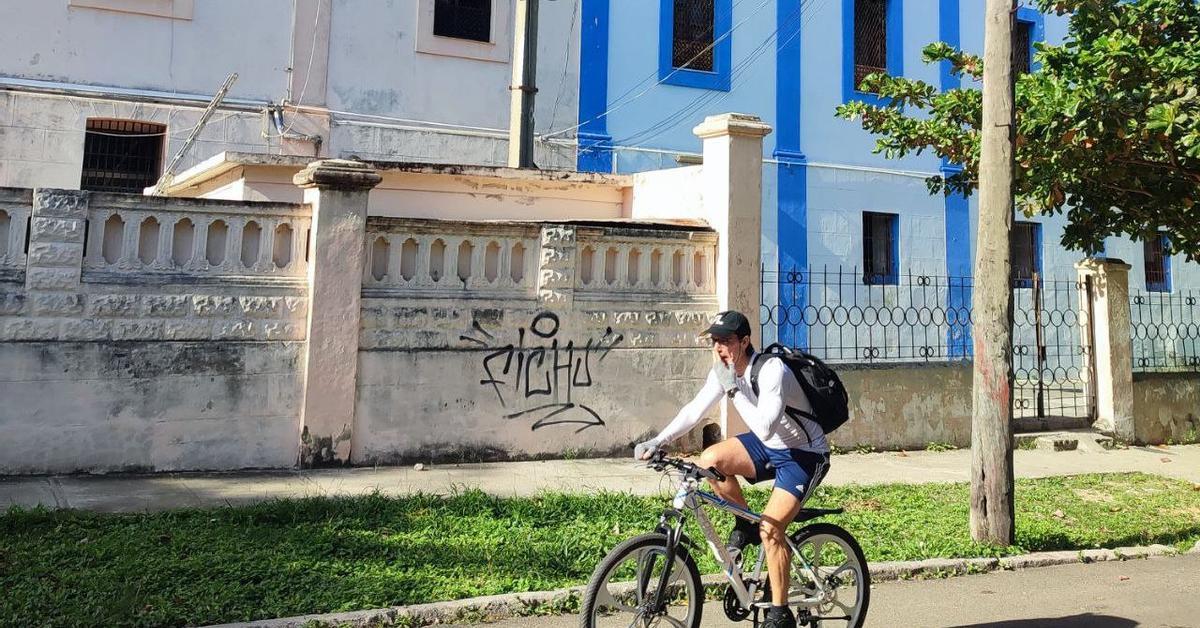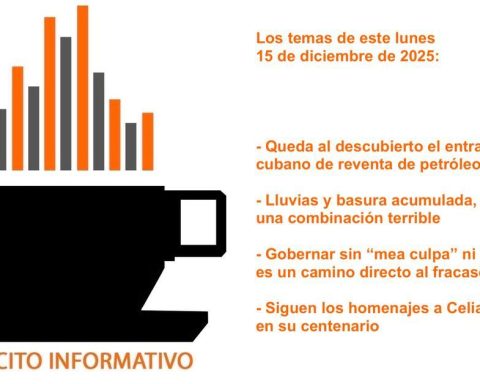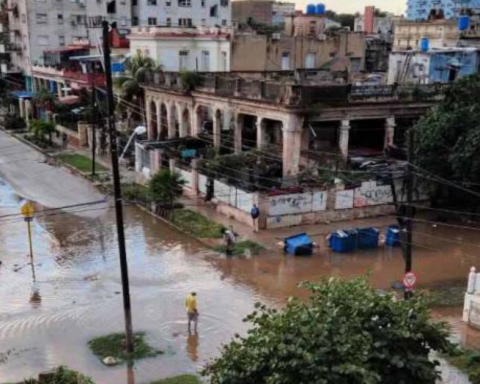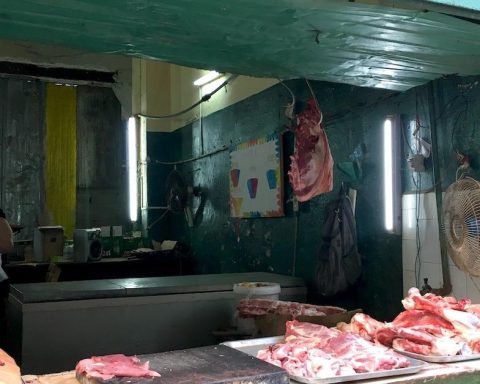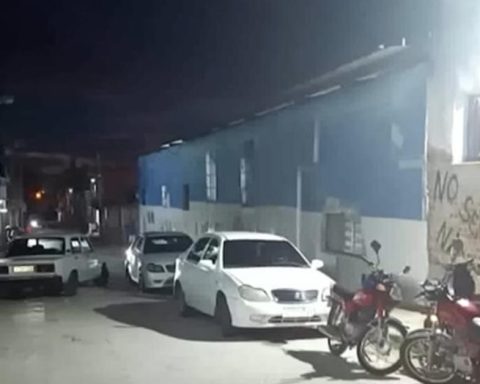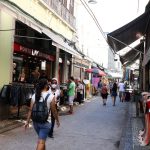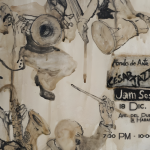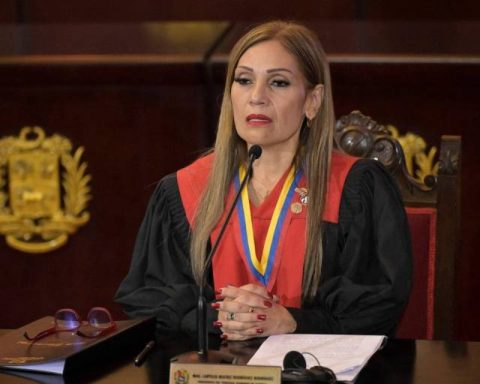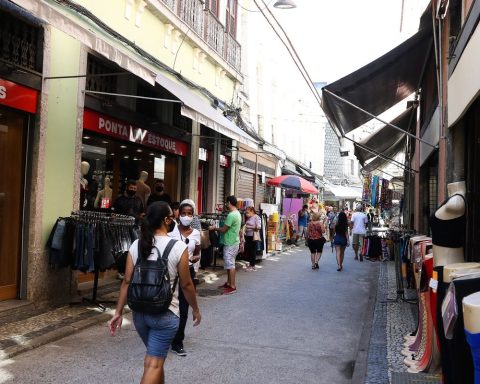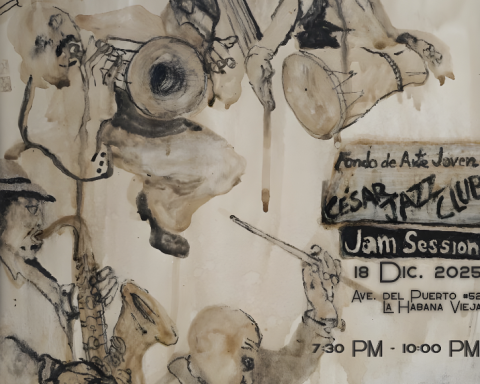Havana/The wall of an impeccable blue is interrupted. The facade continues but does not seem the same: dirty, with humidity spots and cracks. That part of the imposing building located in the corner of Paseo and 23, in the Vedado Habanero, is an advance of the ruin that extends inside. While due to the danger of collapse, the students of the Antonio Guiteras Polytechnic Institute have been relocated, in the other half of the building life remains as peaceful: it is the well -main The Catholic Church in Cuba.
Who contemplates the facades of both institutions attends a kind of unfolding in two antagonistic universes. Dozens of cures, believers and Cuban and foreign visitors arrive to the priestly house: each host represents a gain for the hospetería. To the Polytechnic – the former College of Santa Catalina, who attended girls to the Baccalaureate – no one dares to enter.
“They transferred us because we could no longer teach there, it was dangerous,” he tells 14ymedio A student of the specialty of gastronomy who now receives his classes in the classrooms of the José Ramón Rodríguez Polytechnic, also in the Plaza de la Revolución municipality. “When I went to study, I had been practically declared uninhabitable,” the adolescent acknowledges.
/ 14ymedio
“The bathrooms were all tupid, there were leaks on the roofs and in some areas even pieces had been detached in the classrooms, a tragedy did not occur in the classroom,” adds Carmen, a student’s mother and who says she feels relieved that her son Do not have to receive the subjects in a place that, he considers, “had to be repaired many years ago.”
Precisely, three decades ago, when Arturo, 49 years inside.
“At that time the ailments were already noticeable,” he says about the property, in whose main half there was a convent of Dominican nuns of closing and in the other, which gives to 23rd street, the College of Santa Catalina, which the Catholic Church had to deliver in 1961 to the Ministry of Education, by legal obligation, after the nationalization of the teaching of Fidel Castro.
The wide eclectic -style building, which occupies an entire apple, was thus divided into two halves that have followed very different paths. According to a historian of the Dominican order, the nuns who resided there emigrated to Colombia and the United States. Before the stampede, Pope John XXIII – who came to admire Fidel Castro – asked them not to leave. They only remained 13 and, two decades after the revolutionary triumph, most religious were about 80 years old. At that time, the school already suffered the first damage.
/ 14ymedio
“My classroom was at the end, after crossing the central courtyard and was not a space designed to teach but the area where the wide staircase that came from the ground floor,” says Arturo. “It was like a kind of preamble before accessing the other area that had a balcony corridor and halls that were more appropriate to have tables, chairs, a blackboard.”
“At that time there were leak problems, the tUpitions in the bathrooms were constant and once a repello cake fell from the top of a wall and made a shoulder wound to a girl in my classroom.” Arturo was surprised when, decades later, he learned that a neighbor had begun to study last September and that “there had been practically anything to fix that in all this time.”
Closed to lime and song, when the classes were restarted in the rest of the Havana schools after the end of the year pause, the Guiteras remained silent. A neighbor of Street A, where the main entrance to the teaching center is confirmed to this newspaper that “months ago they took the boys because that is destroyed.”
In the bass of the building, several families were also made with spaces that once were part of the convent and that have become private homes. A woman swept the leaves of the various outfits in the block and who had fallen in front of her door. “The Guiteras is like Guiteras, about to collapse,” ironized in allusion to the main Cuban thermoelectric, homonym of the Polytechnic and also with serious problems that make it out of frequently.
The woman adds that “months ago a brigade arrived to evaluate the effects and they will supposedly repair them but that is totally closed and it is not heard that they are working.” The street without the bustle that the students impregnated for decades are unrecognizable. “It is true that they made enough noise but also many businesses in this area benefited because the students bought many chucheías at the exit.”
The priestly house, next to it, shows what could have been the Polytechnic with equal maintenance and constant. “It is the quintessential lodge of the Catholic clergy on the island,” he explains to 14ymedio A source of the Havana Archdiocese that knows the administration of the house well.
Although high category visits – from cardinals and senior Vatican officials to the potatoes that Cuba have visited – stay in the Apostolic Nunciature or the Bishop Conference, the Priestly House has all possible comforts and other characteristics that, being treated of the island, they are almost inconceivable. This is the case of central air conditioning that refreshes all its rooms and that each guest must indicate whether or not to turn on in their room.
The house is attended by a rector – currently, Jorge Luis Pérez Sotoa critical priest with the government – and an extensive team of lay workers. It has a conference room, theater, dining room and chapel. In addition, it has numerous meeting rooms and special rooms, reserved for specific guests, such as Cuban bishops. Although the convent has two visible plants, there is a third, in the protection of indiscreet looks of both the street and the cloister, says the source of 14ymedio.
It is precisely this huge patio, which has a large number of fruit and decorative plants, one of the most appreciated features of the building. According to two brief videos published by the Facebook page of the house, the patio was removed in 2023 and its central source, decorated with lions and night lights, fully restored. That same year, during a wave of crimes that the Church denounced against its properties, They tried to steal In the building.
/ 14ymedio
The house and the Polytechnic are heirs of the former convent of Santa Catalina de Siena and its dependencies, whose original foundation is very old –1688, by order of the powerful Aréchaga family -, and which preserves annexes the church of the same name. In the temple you can see the signs of its old tenants, closing nuns that could not have the slightest contact with the outside world, and that attended the mass behind the bars in several areas of the Church.
The convent was famous for being one of the richest in colonial Havana and for guarding relics of European saints and remains of several bishops of the island, such as Jerónimo Valdés, a famous founder of the Casa house for the country’s orphans. Félix Varela was one of the priests who celebrated Mass for the nuns of Santa Catalina. At the beginning of the 20th century the old convent was demolished and the current building was built.
In 1981, the newly released Havana Archbishop Jaime Ortega was informed by the nuns that they would leave the building, which remained in the hands of the ecclesiastical authorities. The restoration was carried out with money from the Vatican, although the source consulted by this newspaper does not require how much it cost. At that time, the convent was also in very bad condition. “More than removing it, what was done was to rebuild it,” says the source.
The closed doors of the Polytechnic predict that the “unfortunate” half of the building will not run the same fate as its neighbor. Rumors have run that the government, without money to rescue the old school, will return it to the Catholic Church.
The source consulted by 14ymedio You cannot confirm whether this is true or not. But, although he does not believe it impossible, he considers that it would be an outrageous movement of the regime, which has been mistreating the property for six decades. And he regrets: “They would only be able to return what is already destroyed and cannot maintain.”
